| | | |
Dear Readers,
The Lufthansa family is growing: following approval and completion of the transaction, ITA Airways will become a new Group subsidiary. This week, the EU Commission approved the Lufthansa Group's acquisition of a stake in the Italian airline. Following intensive competition law scrutiny, the way is now clear for Deutsche Lufthansa AG to purchase an initial 41 percent stake in ITA. This is not only good news for the two companies, their employees and customers, but also for aviation in Italy and Europe. Read the first article to find out more about when the transaction is due to be completed and what conditions the EU is imposing.
Strengthening the competitiveness of Europe as a business location is to become a top priority of the new EU legislature. This change of direction is urgently needed. This is particularly true in the highly competitive global aviation sector. European network carriers and hubs are in unequal competition with (state-owned) companies from the Bosporus and the Middle East. The market share gains of these airlines are inextricably linked to unfair framework conditions in labor and social law, in infrastructure and extremely different climate protection requirements. Brussels must acknowledge this and align its own regulation accordingly. A strong aviation industry is strategically, economically and politically important for Europe.
Another key task for politicians and the industry is to make flying more sustainable. To this end, the Lufthansa Group is investing billions in new, efficient aircraft and is driving forward the development and use of sustainable fuels. One promising technology is solar kerosene. A milestone was reached with the opening of the first solar fuel plant in June. Lufthansa has been involved in climate and environmental research for 30 years. A current focus is on research into so-called non-CO2 effects. These are primarily long-lasting contrails and cirrus clouds at high altitudes, which can contribute to global warming. Together with industry and science, Lufthansa is testing whether and how such non-CO2 effects can be reduced or even avoided.
Finally, let's take a look at Hamburg: Lufthansa Technik has been supporting the German Air Force for decades. The Lufthansa Group is now intensifying this partnership with the Bundeswehr under the brand name "Lufthansa Technik Defense". In this policy brief, we explain in detail what exactly is planned.
Enjoy the reading! Andreas Bartels
Head of Corporate
Communications
Lufthansa Group | Dr. Kay Lindemann
Head of Corporate
International Relations and
Government Affairs
Lufthansa Group
|
| |
| | | | ITABrussels gives green lightFollowing an intensive competition law review, the EU has approved the Lufthansa Group’s participation in ITA Airways. The new partnership will improve passenger choice in Italy, connectivity to and from Europe and the competitiveness of the companies involved. | |
| | | | ITA Airways at a glance
The Lufthansa Group is looking forward to thousands of new colleagues. 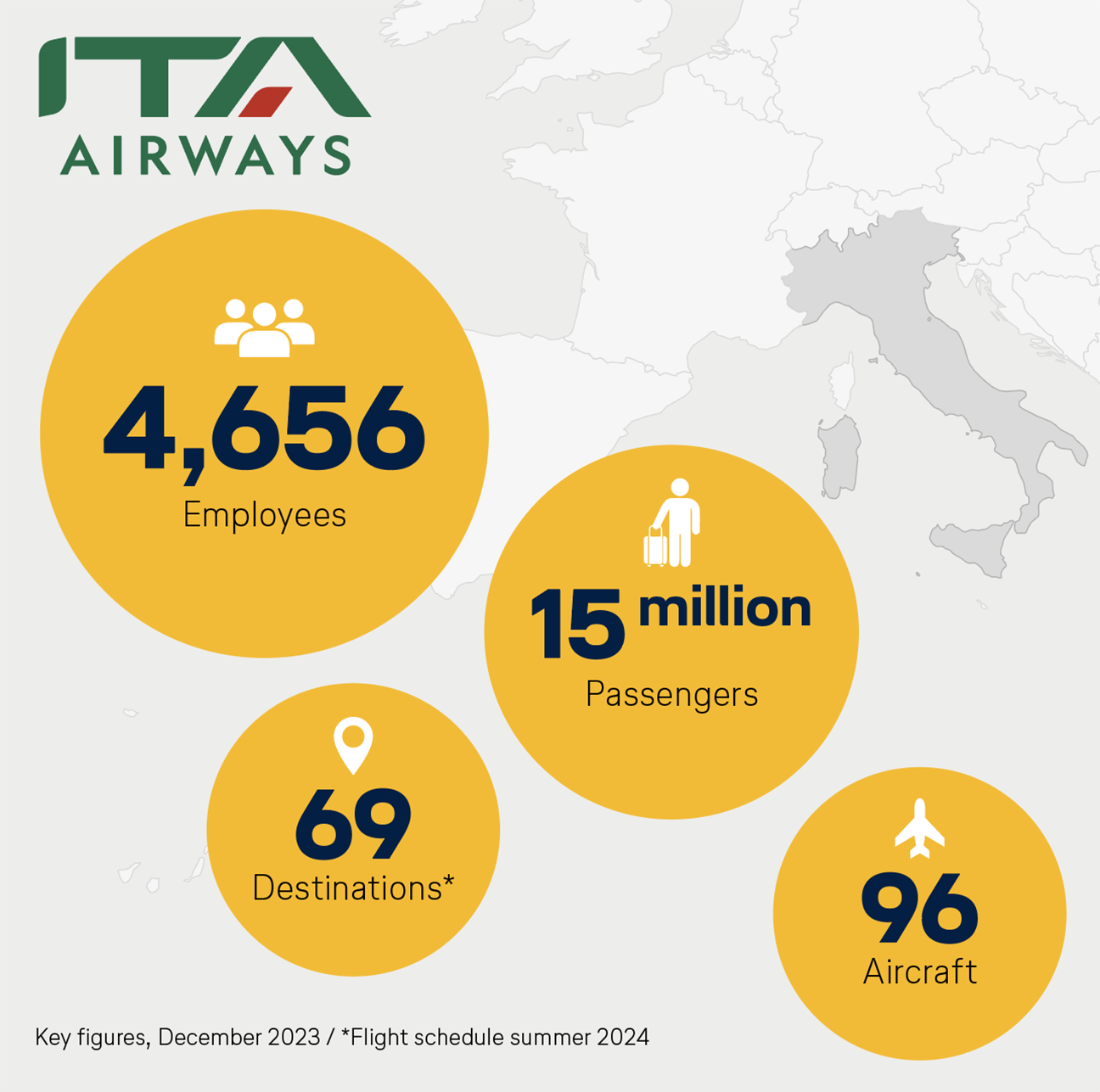
| |
| | | | As part of the Lufthansa Group, ITA Airways will have prospects for the future. The Italian airline, which was launched as a restructured start-up in October 2021, will regain economic stability as a network airline. As Europe’s third-largest economy, Italy will be even better connected to the world. Competition will also be stimulated, as the Italian market has so far been dominated by low-cost carriers. In May 2023, the Italian Ministry of Economy and Finance (MEF) and Deutsche Lufthansa AG agreed on the acquisition of a minority stake in ITA Airways. After months of intensive competition law scrutiny, the EU Commission approved the transaction this week. A solution was found that makes economic sense for all parties involved and at the same time ensures strong competition in Europe. This essentially includes the transfer of take-off and landing rights at Milan Linate Airport to a competitor in short-haul traffic. In the “neighboring traffic” between Italy and the existing home markets of the Lufthansa Group, this competitor will take over single routes on which Lufthansa Group Airlines and ITA Airways still operate today as competitors. Additional feeder flights from Rome to hubs of European competitors will also ensure improved competition on long-haul routes from Rome to North America. After the four home markets and the USA, Italy is the most important market for the Lufthansa Group. The country is not only an attractive holiday region, but also an important destination for business travelers due to its strongly export-oriented economy. ITA Airways and Rome Fiumicino as a southern hub are excellent additions to the Lufthansa’s Group’s route network. The core of the Lufthansa Group’s strategy is the multi-hub, multi-airline and multi-brand business model. The decisive factor here is that each airline maintains its own individual profile and proximity to its home market, while at the same time benefiting from the far-reaching synergies of cooperation within the airline group. This will also be the case with ITA. The future Group subsidiary will retain its DNA, its brand identity and its proximity to its customers and will benefit from the economies of scale of the Lufthansa Airline Group. The EU’s approval creates the conditions for a win-win situation for the companies involved, their customers and employees. At the same time, it is an industrial policy decision with a signal effect for the entire aviation sector. Because consolidation in Europe will continue. Smaller, independent European airlines will find it difficult to compete globally against large airline groups or subsidized state carriers in the long term. In order to be successful as an aviation company globally, size is crucial. Mergers such as the one between the Lufthansa Group and ITA strengthen the strategic autonomy and competitiveness of the EU. With this approval from the competition authority, the acquisition of a minority stake of 41 per cent in the Italian ITA Airways by Deutsche Lufthansa AG for 325 million euros, which was agreed in May 2023, can take place as part of a capital increase. The closing of this approved transaction is expected in the fourth quarter of 2024. This is subject to the prior implementation of the remedies negotiated with the EU Commission and the approval of other competition authorities outside the EU. | |
| | | | Competition in aviationWhen will the EU be honest?Europe needs a change of course. Strengthening competitiveness must become the guiding principle of the new EU legislature. This also applies to aviation. While autocratic countries subsidise their state-owned airlines, the EU unilaterally puts its domestic airlines at a disadvantage. | |
| | | | Imbalance between the aviation markets is growing
Flight schedule summer 2024 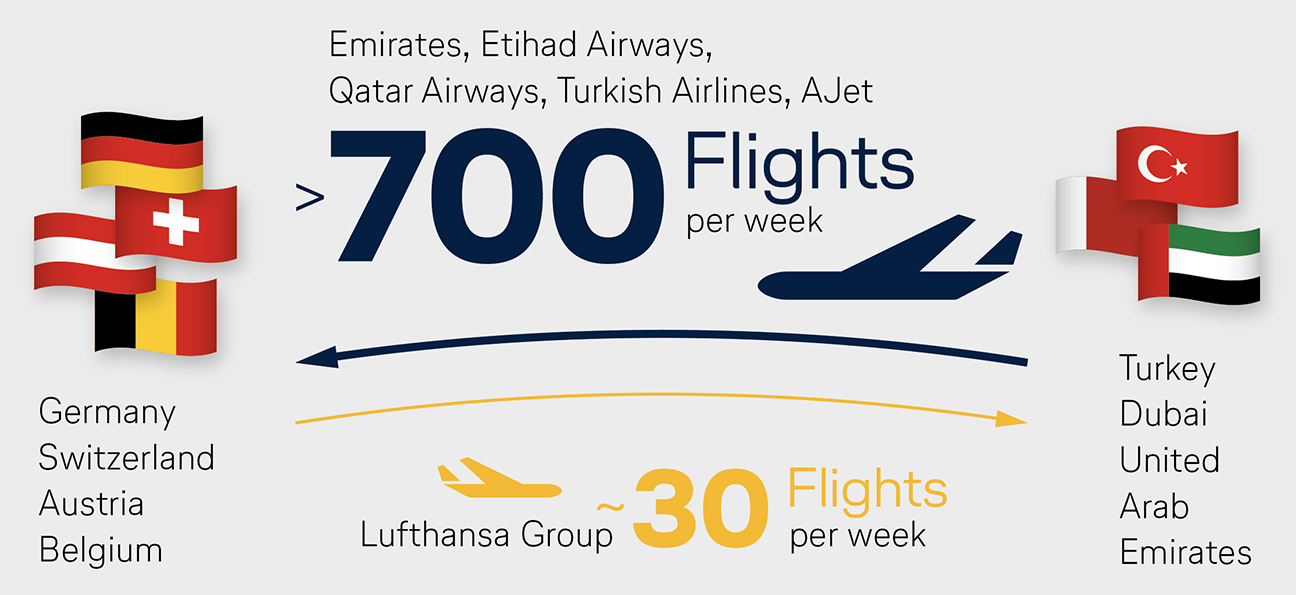
| |
| | | | The competitive dynamics in aviation are greater than ever. Airlines from the Bosporus and the Persian Gulf (BoGu) also have their sights firmly set on the European market. With their nearby hubs, they are competing with the Europeans, particularly in long-haul traffic between the EU and Asia and Africa. Their strategy: exploit cost advantages, massively expand infrastructure and capacities – also with subsidies worth billions. Airlines on the Gulf and Bosporus are expanding
From their hubs, the BoGu carriers will be flying to Lufthansa’s home markets more than 700 times a week this summer. This is another 8 per cent more frequencies than in the strong reference year 2019. In comparison, the airlines of the Lufthansa Group are only flying to the hubs in the Gulf and Turkey around 30 times a week, a decrease of 6 per cent compared to 2019. In Germany, the BoGu carriers have 450 weekly connections this summer compared to around 20 Lufthansa connections. This gap will continue to widen, and the ambitions on the Gulf and Bosporus are enormous. Saudi Arabia wants to more than triple its passenger volume to 330 million travelers by 2030. To this end, a new flag carrier, Riyadh Air, has been founded. The world’s largest airport terminal is planned in neighbouring Qatar, with investment costs in Dubai amounting to around 33 billion euros. In Istanbul, airport capacity is set to increase to 200 million travelers per year by 2028. The structural shifts in the market are already noticeable today. This is shown by data from the German Aviation Association (BDL) on air traffic to Asia: in 2010, almost 40 per cent of passengers from Germany transferred at hubs outside the EU. This proportion had risen to 55 per cent by 2023. The share of German hubs has fallen from 17 to 10 per cent since 2010. Direct connections have also become less important. The share of European hubs is stagnating at a low level. Level playing field required
Strong aviation is strategically, economically and politically important for Europe. In order to avoid a long-term loss of added value in EU aviation, existing laws must be revised and future regulations must be subjected to a “competition check”. This applies in particular to the “Fit for 55” climate protection package, which in its current form further increases existing cost disadvantages for EU companies and thus accelerates the relocation of transport outside the EU. An effective international level playing field should become one of the top priorities of European aviation policy. Isolated solutions, for example in the area of climate protection, do not help the environment, but instead become a trump card for non-European competitors. In order to remain fit for the future, Brussels must now prioritise competitiveness and enable structural growth. A conceptual reorientation is required. The recently published Franco-German agenda sets the right tone for this. | |
| | | | Non-CO₂ effectsBasic research requiredAccording to current scientific knowledge, the overall impact of aviation on the climate is not limited to the effect of CO2 emissions. This is due to the so-called non-CO2 effects. Intensive research is still needed to better understand how they work and to develop measures to reduce the overall greenhouse effect. | |
| | | | 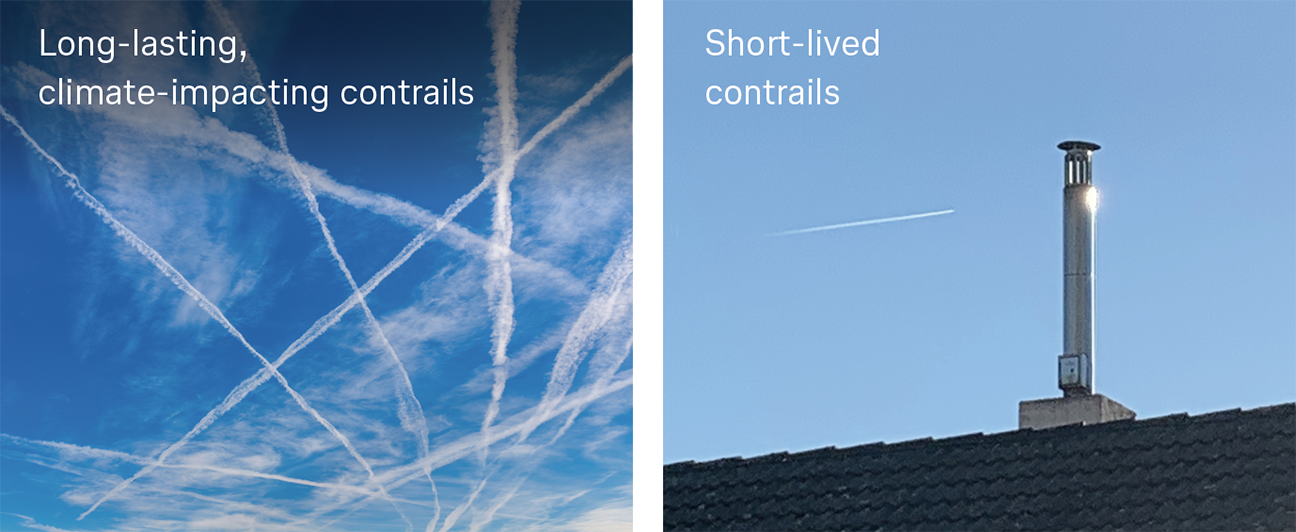
Around three per cent of man-made CO2 emissions are caused by global aviation. In addition, so-called non-CO2 effects are also thought to have an impact on the climate. These include, in particular, long-lasting contrails and cirrus clouds at high altitudes. They are formed when exhaust particles and water vapour emissions from engines freeze into ice crystals in sufficiently cold and humid layers of air and fan out over a longer period of time. Depending on the geographical location and time of day, these contrails can have a cooling or warming effect, although the warming effect (greenhouse effect) probably predominates. “100 Flights Program” tests the avoidance of contrails
In order to better understand the effect of contrails and to be able to avoid possible greenhouse effects in the future, Lufthansa is conducting the “100 Flights Program” together with TUIfly, Condor, DHL, German Air Traffic Control (DFS) and Eurocontrol. As part of this program, which has been coordinated with the Federal Ministries BMWK and BMDV, 100 scheduled flights will fly around climate-sensitive areas using newly developed forecasting tools and analysed weather data. The German Aerospace Center (DLR) and the German Meteorological Service are evaluating the test flights. Optimizing routes and automating flight planning
The data and methods used are still highly uncertain. Therefore, the quality of the forecast data used to calculate the flight route optimization must be improved with the help of satellite data, among other things. It must also be investigated whether the additional CO2 emissions for the detours contribute more or less to climate change than the contrails themselves. Automating flight planning is also a challenge – currently, both the weather data is fed in before the flight and the route is still adjusted manually. In addition, the optimised route can only be flown if the airspace in the relevant region is not too full. All of this shows that it will still take some time before CO2 effects can be automatically and systematically avoided in scheduled flight operations. | |
| | | | Flying over climate-sensitive regions
As part of the joint project D-KULT, Lufthansa is flying over regions where long-lasting contrails can form. Optimized flight routes require precise forecasts before take-off and sufficient capacity in the airspace. On that basis, the altitude profile of a flight (shown here schematically) can be improved. 
| |
| | | | Review of climate impacts across the EU
The EU is also focussing on non-CO2 effects. As part of the reform of the European Emissions Trading System (ETS), a recording and reporting system (MRV) for non-CO2 effects was adopted. From January 2025, airlines will have to monitor and report non-CO2 effects using the MRV system. It is still unclear exactly how this will be done. What is clear is that reliable data, models and uniform, transparent standards are required. The following points are also important: - Regulating effectively: To ensure that flying around the sometimes very large air masses has an overall positive climate effect, the climate impact of the avoided contrails must be compared with the additional CO2 emissions. A suitable calculation tool does not yet exist. Only such an instrument and the resulting findings will form a solid basis for effective regulation of non-CO2 emissions.
- Promoting test flights: Flying detours increases kerosene consumption. The resulting additional costs have so far been borne solely by the airlines that carry out the test flights. It would make sense for the industry and the regulator to share the burden.
- Accelerating the SAF ramp-up: Flying with sustainable aviation fuels (SAF) reduces soot particles and the formation of contrail ice crystals. The use of SAF could therefore also reduce the climate-warming effect of contrails. Politicians must promote the ramp-up of SAF overall.
- Securing research in the long term: The ongoing basic work must be continued with further projects to research non-CO2 effects and their avoidance. The data and measurement methods must be significantly improved. The aim must be to create a reliable database so that climate effects (non-CO2 and CO2) can be automatically and systematically taken into account in scheduled flight operations. To achieve this, all relevant partners from politics, research and industry must work together in the long term.
| |
| | | | Climate reasearch since 1994
The Lufthansa Group has been involved in climate and environmental research for 30 years. For example, the company supports the European research infrastructure IAGOS (In-service Aircraft for a Global Observing System) with the two sub-projects IAGOS-CORE and IAGOS-CARIBIC (Civil Aircraft for the Regular Investigation of the Atmosphere Based on an Instrument Container). In cooperation with research partners, Lufthansa equips selected aircraft with measuring instruments that collect information on the state of the atmosphere during regular passenger flights. The measurement data helps researchers to gain new insights into the development of the climate and the composition of the atmosphere, to make climate models more precise and to improve weather forecasts. They are freely and openly accessible via the central database of the CNRS (Centre National de la Recherche Scientifique) in Toulouse and are currently used by around 300 organizations worldwide. | |
| | | | D-KULT lighthouse project
The “100 Flights Program” is part of the joint project D-KULT (Demonstrator Climate and Environmentally Friendly Air Transport), which was launched in 2022 and is funded by the Federal Ministry of Economics and Climate (BMWK) as part of the sixth civil aviation research program. D-KULT will create important scientific foundations for the avoidance of climate-sensitive areas in routine flight operations. The aim of the project is to define, develop and test all components (data, software and processes) required for climate optimization in routine flight operations. D-KULT is a Europe-wide “lighthouse project”; comparable projects in other countries were not launched until 2023. | |
| | | | Ready for actionLufthansa as a partner for “Zeitenwende”Lufthansa has been a reliable partner for our soldiers for over 60 years. At the ILA Berlin, the company was able to add another chapter to this history: the handover of the third A350 for the German government’s fleet. In addition, Lufthansa intends to further expand its cooperation with the German Armed Forces, the Bundeswehr, in the future and contribute to the realization of the turnaround in security policy. | |
| | | | 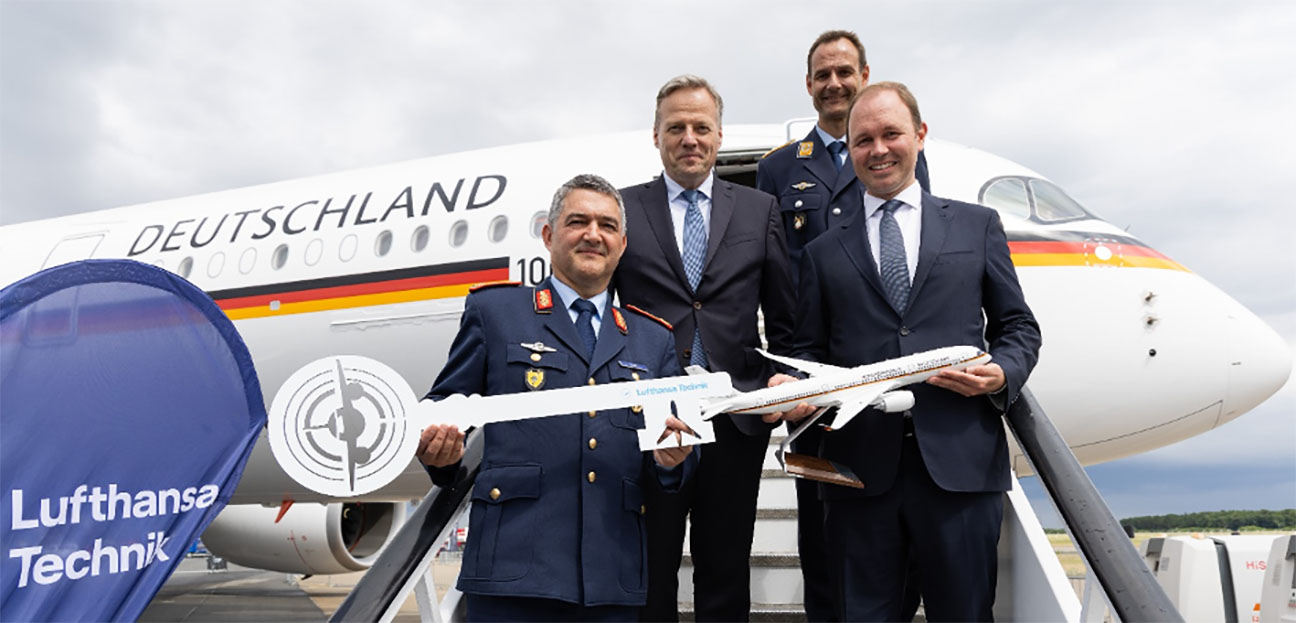
General Frank Gräfe (Head of Operations at Air Force Command), Sören Stark (Chairman of the Executive Board of Lufthansa Technik AG), Colonel Stefan Schipke (Commander Special Air Mission Wing), State Secretary Nils Hilmer (Federal Ministry of Defense) (from left to right) | |
| | | | For the Lufthansa Group, acting in a value-orientated and responsible manner is both a mission and an aspiration. The company, which is based in Germany, sees itself as a strategic partner in securing the political and economic sovereignty and resilience of the Federal Republic of Germany. The Group has proven this on several occasions, even in times of crisis: During the corona pandemic, it secured supply chains, transported urgently needed medical supplies to Germany and flew thousands of holidaymakers, business people and citizens home. After the end of the mission in Afghanistan in August 2021, the Lufthansa Group helped to bring the remaining Germans and their local helpers to safety as a partner of the German Armed Forces and the Federal Foreign Office. More than 300 crew members volunteered for the mission as part of the “Kabul Airlift”. The Russian war of aggression against Ukraine has fundamentally changed the geopolitical and security situation in Europe, and the peace order has been dissolved. “We are experiencing a turning point,” said Federal Chancellor Olaf Scholz three days after the Russian attack. He committed the country to a political paradigm shift, “Zeitenwende”, and announced the 100 billion euro special fund to better equip the Bundeswehr. The Russian attack had tragically shown how important it is to be able to stand up for our values militarily in an emergency. This requires a Bundeswehr that is ready for action. Chancellor Scholz summarized this in his speech on the turning point: “We need aircraft that fly (...) and soldiers who are optimally equipped for their missions.”
The Lufthansa Group, which has special expertise in the areas of aircraft maintenance, logistics and freight as well as in pilot training, can act as a strategic partner to the German Armed Forces. And thus contribute to securing the sovereignty and ability to act of the Federal Republic of Germany in terms of the energy transition. | |
| | | | Lufthansa Technik:
Long-standing cooperation with the German Armed Forces
The German Air Force and Lufthansa are already working together on a basis of trust. Lufthansa Aviation Training supports the German Armed Forces in the training of pilots. In the training aircraft, the prospective drone pilots learn, for example, how to handle an aircraft in general air traffic before they fly the unmanned systems. Lufthansa Technik, on the other hand, has been responsible for supporting the German government fleet for more than 60 years. At the Berlin International Airshow (ILA), the company handed over the third and last fully equipped A350 to the Air Force of the Federal Ministry of Defence – on time and on budget. The global market leader in the maintenance, repair and overhaul of civil aircraft now also offers its core competences for the support of flying weapon systems such as the F-35 fighter aircraft, the P-8A “Poseidon” maritime patrol aircraft and the CH-47F “Chinook” heavy transport helicopter. The company operates under the brand name “Lufthansa Technik Defense”. As the Bundeswehr is procuring numerous aircraft from the USA as part of the 100 billion euro special fund, Lufthansa Technik can support the long-term maintenance of these aircraft and helicopters as a national partner. This is an important contribution to the development and expansion of technological expertise in Germany and to ensuring a high level of fleet availability for the German Air Force. According to Sören Stark, CEO of Lufthansa Technik, the company will do everything in its power to ensure that soldiers have the best possible and safest equipment at their disposal to successfully carry out their missions. | |
| | | | World’s first production plant for solar fuelsFlying with sunlightWith the opening of the “DAWN” solar fuel plant, sun-to-liquid technology is ready to be scaled up. A milestone for the energy transition and the strategic partnership between the Lufthansa Group, SWISS and Synhelion. | |
| | | | The DAWN system consists of a 20 meter high solar tower and around 150 mirrors. The solar tower contains a solar radiation receiver, a thermochemical reactor and a thermal energy storage system that enables the cost-efficient production of solar fuels around the clock. 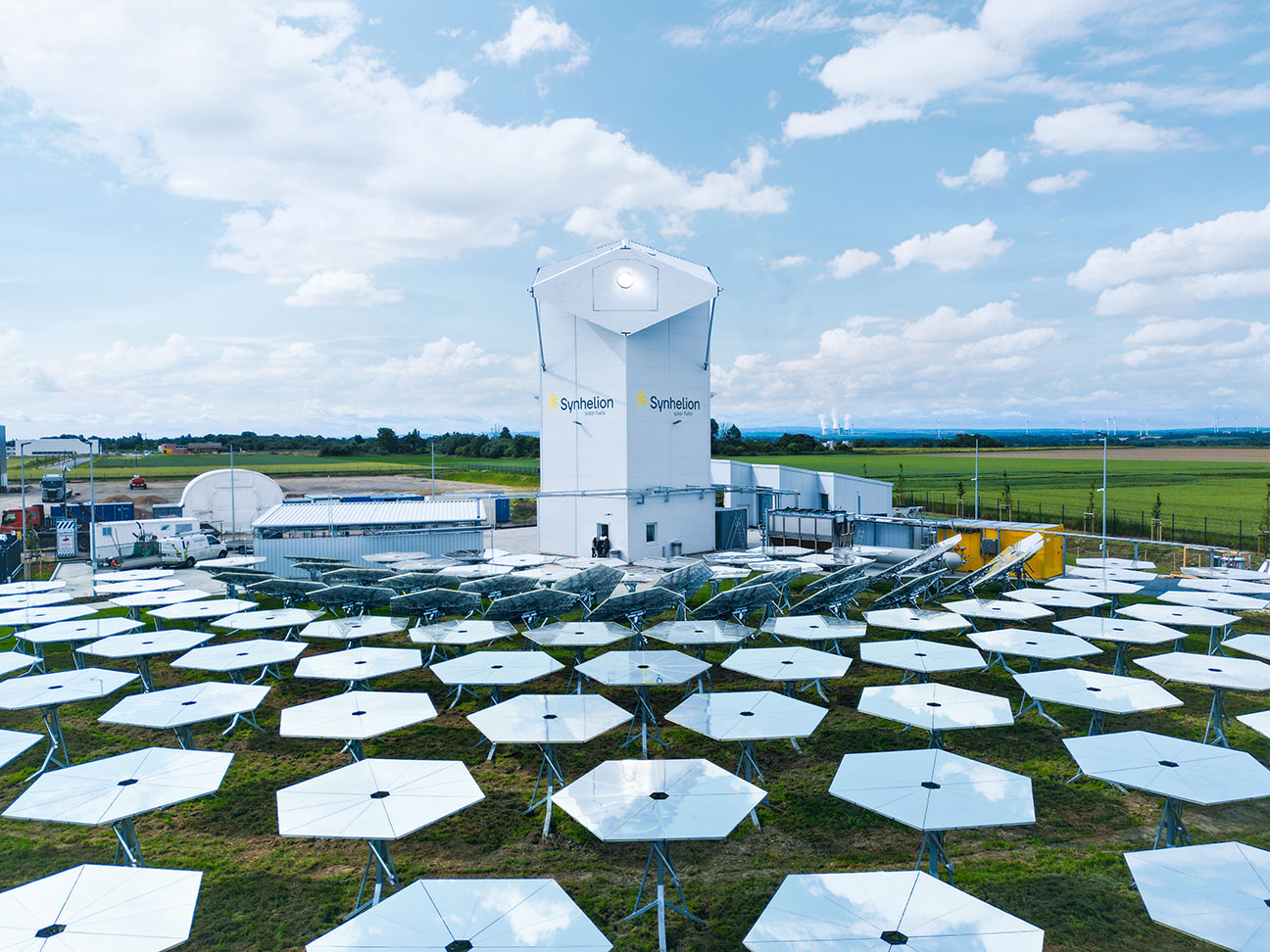
| |
| | | | The Swiss start-up Synhelion is demonstrating its sun-to-liquid technology on an industrial scale for the first time at the “DAWN” plant near the small Rhineland town of Jülich, which opened in June. CO2 is extracted from the atmosphere and converted into a synthesis gas using concentrated sunlight and water. This can then be used to produce fuel. Such a sun-to-liquid fuel only releases as much CO2 as was previously extracted from the atmosphere. The next step is the construction of a commercial plant in Spain from 2025, with more in the pipeline. The goal is an annual production volume of around one million tons of solar fuel. The Lufthansa Group, SWISS and Synhelion have been working together on the market launch of solar fuels since 2020. SWISS has held a financial stake in Synhelion since 2022 and will be the world’s first airline to fly with solar kerosene. | |
| | | | Climate protection costsNew environmental cost surchargeFlying to and from Europe is becoming increasingly expensive due to climate policy requirements. The Lufthansa Group is unable to fully compensate for these successively rising costs. The Group is therefore introducing an environmental cost surcharge. | |
| | | | The surcharge is intended to cover part of the steadily rising additional costs due to environmental regulations. These include the statutory blending mandate for sustainable aviation fuel (SAF) for flights departing from European Union (EU) countries from 2025 and adjustments to the EU Emissions Trading System (ETS). The environmental cost surcharge will apply from 1 January 2025 to all flights marketed and operated by the Lufthansa Group, departing from EU member states as well as the UK, Norway and Switzerland. The amount of the surcharge varies depending on the route and fare and is between 1 and 72 euros. The environmental regulations in force in the EU place a one-sided burden on European airlines. We therefore urgently call on politicians to find regulations that ensure equal treatment of EU airlines with their non-European competitors and thus create fair competition. | |
| | | | LUFTHANSA GROUPYour Contacts Show PDF Show PDF

Andreas Bartels
Head of Corporate
Communications
Lufthansa Group  +49 69 696-3659 +49 69 696-3659
 andreas.bartels@dlh.de andreas.bartels@dlh.de
| 
Dr. Kay Lindemann
Head of Corporate
International Relations and
Government Affairs
Lufthansa Group  +49 30 8875-3030 +49 30 8875-3030
 kay.lindemann@dlh.de kay.lindemann@dlh.de
|
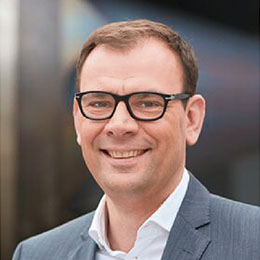
Martin Leutke
Head of Digital Communication
and Media Relations
Lufthansa Group  +49 69 696-36867 +49 69 696-36867
 martin.leutke@dlh.de martin.leutke@dlh.de
| 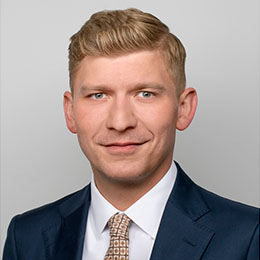
Jan Körner
Head of Government Affairs
Germany and Eastern Europe
Lufthansa Group  +49 30 8875-3212 +49 30 8875-3212
 jan.koerner@dlh.de jan.koerner@dlh.de
|
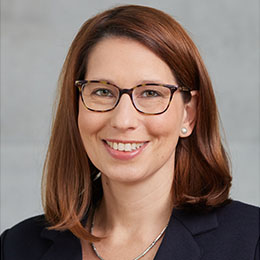
Sandra Courant
Head of Political Communication
and Media Relations Berlin
Lufthansa Group  +49 30 8875-3300 +49 30 8875-3300
 sandra.courant@dlh.de sandra.courant@dlh.de
| 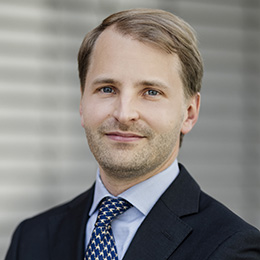
Ruben Schuster
Head of EU Liaison Office
Lufthansa Group  +32 492 228141 +32 492 228141
 ruben.schuster@dlh.de ruben.schuster@dlh.de
|
| |
| | | | Published by:
Deutsche Lufthansa AG
FRA CI,
Lufthansa Aviation Center
Airportring, D-60546 Frankfurt Andreas Bartels
Head of Corporate
Communications
Lufthansa Group Dr. Kay Lindemann
Head of Corporate International
Relations and Government Affairs
Lufthansa Group Martin Leutke
Head of Digital Communication
and Media Relations
Lufthansa Group | Editor in Chief:
Sandra Courant Editorial Staff:
Anton Heinecke, Markus Karassek, Maximilian Kiewel, Marie-Charlotte Merscher, Dr. Christoph Muhle, Gerd Saueressig, Yannick Tubes Press date:
4 July 2024 Agency Partners:
Köster Kommunikation
GDE | Kommunikation gestalten |
| |
|